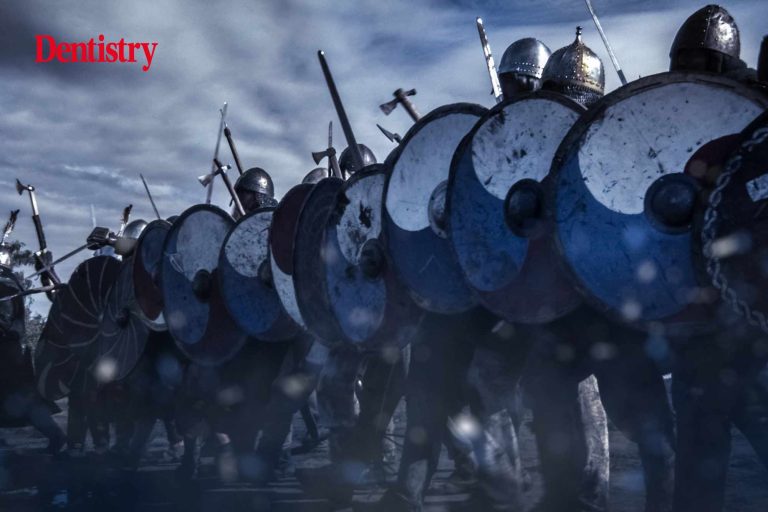A new study has revealed the prevalence of dental problems among the Vikings, including how they cleaned and cared for their teeth.
The study examined 3,293 teeth from the skeletal remains of 171 Vikings buried in Varnhem, Sweden, in the 10th and 11th centuries. Of these 171 individuals, 133 had permanent dentition and the remaining 38 had deciduous and mixed dentition.
Conducted by researchers from the University of Gothenburg, Sweden, the teeth were examined clinically using a dental probe under a strong light source. Some of the teeth were also x-rayed to confirm the findings.
The researchers looked for evidence of carious lesions, tooth wear, apex pathology and other findings of interest. The number of teeth left and lost was also recorded – the alveolar bone was examined to determine if a tooth was lost before or after the person’s death.
The study found that almost half (49%) of the subjects tested had at least one carious lesion. However, all subjects with deciduous or mixed dentition were free of caries. About 62% of people with permanent dentition had at least one tooth decay.
Infection and treatment
In addition, the study found evidence that Vikings used toothpicks to remove bits of food. Most interestingly, no carious lesions were found in teeth with abrasions caused by tooth picking. According to the researchers, this means that some of the Vikings wanted to keep their teeth clean.
About 4% of the teeth showed signs of infection, and the extensive carious lesions suggest that a number of Vikings would have suffered from toothache, as many of the caries were close to the pulp. Bits of food stuck in open cavities would also cause discomfort and pain. The study also found evidence that Vikings filed their teeth to relieve discomfort caused by infection.
Of all teeth lost, about 6% were lost before the person died. The researchers believe this was likely due to caries and extraction because the prevalence of caries was high in the remaining teeth.
But the Vikings didn’t just stop at filings and extractions to ease the pain, as there is evidence that they practiced more complex treatment as well.
For example, two molars showed evidence that the pulp chamber had been opened and enlarged to relieve pain. In addition, a central incisor with an apex infection was severely abraded. The researchers believe this is no different from modern dental treatments, suggesting that dentistry in the Viking Age was relatively sophisticated.
“Great to imagine”
Carolina Bertilsson, a dentist at the University of Gothenburg, is the lead author of the study. Talking to you Popsci of the study’s findings, he said: “I think that both tooth decay and other dental diseases are highly correlated.
“It is awful to imagine the suffering some of these people must have gone through with cavities, tooth extractions and infections, without any of the methods we use today in modern dentistry.
“It makes me appreciate the times I live in, being able to help my patients with local anesthetics during dental treatment.”
In the future, the research team plans to investigate the bacteria present in the Vikings’ bodies and the effect this may have had on their oral health.
You can read the full study here.
What are your thoughts on this study? Contact [email protected]
Follow Dentistry.co.uk on Instagram to keep up with all the latest dental news and trends.

